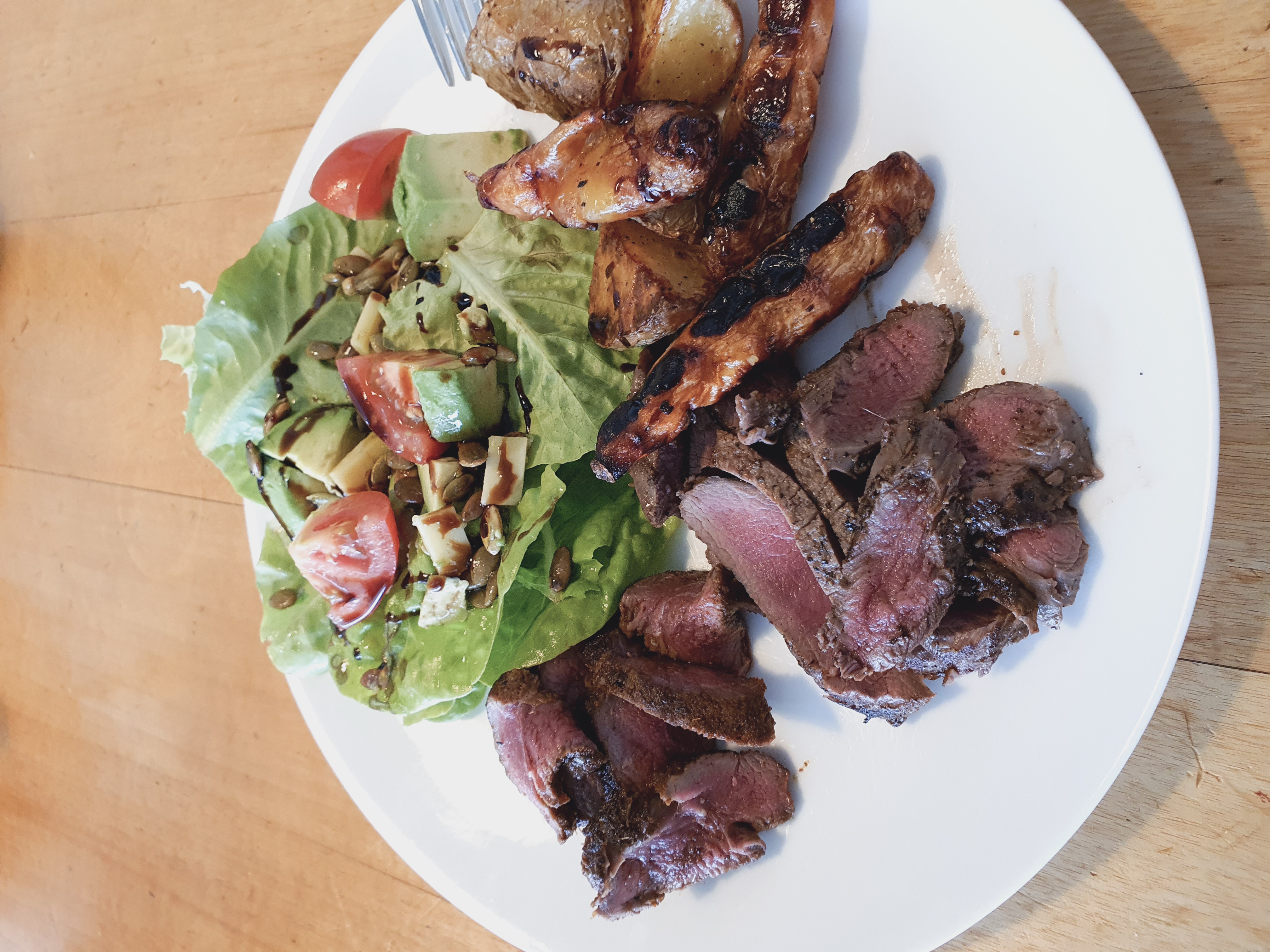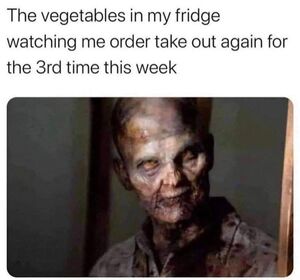https://i.stuff.co.nz/life-style/foo...more-wild-meat
OPINION: When it comes to food and drink, Central Otago is renowned for producing gorgeous wine and superb stone fruit. But there’s another incredible food source in the district that deserves as much attention: wild rabbits.
When we first moved to the farm, there were thousands of rabbits. If we went out to one of the hills and clapped, the hill would “move” before our eyes, with rabbits dashing everywhere. Thankfully, we have made good progress, and now I might see the occasional rabbit hopping around the garden, or a few in a paddock.
This has come at a big cost, building kilometres of rabbit-proof fences, and time spent shooting. Shooting animals is confronting to some, as it was for me when I met my hunter-gatherer husband 16 years ago, but it’s a much less cruel way of controlling rabbits than poisoning, and it keeps those toxins out of the soil and food chain, which is important to us.
Rabbit calicivirus was also released in New Zealand as a means of suppressing the population. However, over time it’s had less impact because the rabbit population has become relatively immune.
READ MORE:
* Nadia Lim: why we should care more about wool
* Nadia Lim: Looking after your soil is like looking after your body
* Nadia Lim: The simple reason bees should matter to all of us
* Nadia Lim gets her hands dirty a year on from lockdown
If you’re wondering why these cute, fluffy creatures are deemed such a threat, it’s because they can quickly render land useless for agriculture and horticulture. Each doe (female) will have 20-50 young a year (you can see where the saying “breed like rabbits” comes from).
ADVERTISEMENT
Advertise with Stuff
Unfortunately, burrowing and scrapes cause extensive damage to erosion-prone soils, and they will eat young vegetation before it has a chance to become established.
I learnt this the hard way when I planted some natives and berry bushes last year without properly rabbit-proofing them. Not a trace was left. I was devastated.
They also compete for pasture with other animals. Seven rabbits eat the same amount of grass as one sheep.
So, I know they do a lot of damage and are called pests. However, in my mind, anything in the natural world can be a valuable resource, so we eat them. We can’t eat and give away all the ones we kill, but we do eat what we can. I feel we’re lucky to get to eat such an organic, truly free-range (and happy until it’s shot) meat that would have otherwise gone to waste.
Wild rabbit is delicious. I slow cook the legs in a casserole (Moroccan apricot or red wine and mushrooms are favourites) until the meat falls off the bone. Then it goes into a pie, is tossed with pasta or is eaten with mashed spuds.
The backstraps, which only need a quick cook as they are naturally tender, are amazing marinated in lemon and herbs or a dry spice rub, then pan-fried or barbecued. Other favourites are “butter bunny” and, the kids’ favourite, “bunny nuggets”.
Everyone I serve it to loves it, and they always think it’s chicken. Even though it’s very tasty, most Kiwis can’t get past the fact rabbits are a pest, and screw up their noses when I talk about eating them.
Rabbits are the most prolific wild animal on our farm, but they’re not the only ones we have to contend with. We’re always battling with something, from birds (which eat the seeds of our crops), to possums, ferrets and stoats, to wild deer, goats and pigs. The wild pigs, in particular, have been a big problem.
We have enough wild boar bacon in the freezer to last years, but my husband Carlos angrily jokes that it’s worth about $400 a kilo. That’s because this particular boar did tens of thousands of dollars worth of crop
damage.
When we first moved on to the farm, we spotted a sow and her piglets on the hills one beautiful summer evening as we were having dinner. How lovely to have a few pigs around, we thought. We like biodiversity, so we left them alone. A few months and a few families of pigs later, Carlos came across one of our grain paddocks that the pigs had got to first, all but decimated. They eat the grain and uproot any crops you've sown.
ADVERTISEMENT
Advertise with Stuff
This boar had been having a lovely time eating everything he could on the farm, including lots of wild apples, and he was huge. There were several inches of fat on each side of his belly. With no added nitrates, nor water pumped into it, you can imagine how good the bacon was.
In 2019, we lived in a small village of 900 people in Umbria, in Italy, for a few months. One of the things that impressed me most about Italian village life was the fact they celebrated their wild food as a precious resource.
Throughout summer we had a festival every week celebrating different wild foods, such as the Sagra del Bosco (festival of the forest, celebrating wild mushrooms and fruits), and Sagra del Cinghiale (wild boar). To them, wild food is superior to farmed. In New Zealand, we seem to have the opposite view.
Living here, we feel lucky to have access to a free outdoor supermarket of high-quality, organic, free-range meat, and I’m glad that Carlos is pretty handy with a shotgun.
My dad was Buddhist and I came from a non-hunting culture, so it was a bit of a shift for me, initially, to come to terms with it. But I realised that if I’m going to eat meat, this is the best way I can. These animals have lived a truly free-range, organic life, so I am comfortable with eating them, and happy knowing they haven’t been wasted.
Imagine if we could shift our mindset to viewing these “pests” as a resource? It would divert thousands of wild animals left to rot on the hills (think of the tahr cull last year), to be used as a nutritious resource.
Just after the first lockdown, the Fiordland Wapiti Foundation – in an attempt to control the population of deer – diverted the carcasses to a meat processor instead of leaving them to rot.
The result was 18,000 1kg packs of prime, export-grade venison mince, which was then distributed to food banks to feed families in need. I was lucky to get to try some, and it was fantastic quality.
Surely eating wild is the most sustainable, environmentally friendly, ethical, and least-wasteful way to eat meat? These animals already exist, roaming free and wild, in catastrophic numbers.
Welcome guest, is this your first visit? Create Account now to join.
Welcome to the NZ Hunting and Shooting Forums.
Search Forums
User Tag List
+ Reply to Thread
Results 1 to 15 of 23
-
07-05-2021, 12:47 PM #1
Nadia alum says eat more wild meat
Last edited by stug; 07-05-2021 at 12:52 PM.
-
-
07-05-2021, 01:28 PM #2
a well thought out and written article indeed.... imagine how great it would be if we could get ALL the big and semi big named chefs on board to promote harvesting wild game for food.....I will volunteer to NOT BE THE ONE to take Nigella out hunting...my other primal urges could get in the way LOL.
-
07-05-2021, 01:32 PM #3
I read that it's a good sentiment and hopefully will get some people thinking.
However the devil is in the detail, putting wild caught into the food chain commercially is a high cost exercise steeped in frustration thanks to food safety regulations and the widespread use of poisons especially brodifacoum and the like.
Rabbit used to be an item up until the 60s or 70s and the last rabbits I saw in a butchers were frozen and imported from China.
-
07-05-2021, 02:05 PM #4
-
07-05-2021, 02:12 PM #5
-
07-05-2021, 02:23 PM #6Member

- Join Date
- Dec 2019
- Location
- Okawa Hawkes Bay
- Posts
- 3,192
Greetings Marty Henry,
Perhaps the first step is for people to be encouraged to grow some of their own food, easy stuff first. This may start an appreciation for nature and natural grown food, perhaps including game as well over time. I think you are right that the commercial food delivery system is not going to fly for game.
Regards Grandpamac.
-
07-05-2021, 03:30 PM #7
-
07-05-2021, 04:36 PM #8
Fully agree it's a re-education issue but most of those that would benefit the greatest either think they dont have the time, and lack the inclination, or the area to grow a meaningful amount of food.
Allotments and community gardens are one way the lack of land is addressed in the UK.
As to jucy little pests, most people will never hunt nor would you want some of them to but they may be interested in eating someone else's catch. After the "gruesome insides out, outsides off" bit has been done and it been nicely sliced up for presentation.
Anyone can sell vegetables but meat and fish that's a big mpi food safety hurdle to overcome.
Giving or donating it as the wapiti foundation did skirts the edges of the regulations.
I wholeheartedly agree with her sentiments and she is in a position of privilege (own farm) to be able to do that so are quite a few on here. But for the bulk of the great unwashed purchase via commercial channels is the only option available, and the only way of using meaningful amounts. Then it probably won't be long before some enterprising outfit starts farming rabbits for example as its much easier to obtain a regular supply that way.
-
07-05-2021, 05:13 PM #9Member

- Join Date
- Jun 2015
- Location
- christchurch
- Posts
- 18,551
i did see show where ramsay went out deer hunting with a BAR, lucky bugga
-
07-05-2021, 06:33 PM #10Member

- Join Date
- Dec 2019
- Location
- Okawa Hawkes Bay
- Posts
- 3,192
Greetings Again,
We are on a small block so to an extent blessed as well but I was always amazed how much my late father could grow on the small area around his flat. His garden was not much bigger than a couple of double beds and he steered clear of the space hungry stuff but he was seldom short of salad veg and also supplied many of the neighbors as well. Sixty plus years of vegetable gardening taught him a thing or two.
Regards Grandpamac.
-
07-05-2021, 07:47 PM #11
I never tire of posting links to this:
https://www.youtube.com/watch?v=a40VeD8YxiU
-
07-05-2021, 07:51 PM #12
-
07-05-2021, 08:47 PM #13Member

- Join Date
- Jun 2015
- Location
- christchurch
- Posts
- 18,551
-
07-05-2021, 09:04 PM #14Member

- Join Date
- Jul 2020
- Location
- Central North Island
- Posts
- 5,373
Was wondering just how long it would take for you to come along and remove the green bits!



-
08-05-2021, 01:20 PM #15
Similar Threads
-
Wild game meat for those who need it
By Hiawatha in forum HuntingReplies: 39Last Post: 30-04-2020, 12:40 PM -
Alum
By Shearer in forum TaxidermyReplies: 21Last Post: 27-10-2017, 09:19 AM -
Wild Food...wild plums
By EeeBees in forum Game Cooking and RecipesReplies: 11Last Post: 17-12-2013, 07:12 PM
Tags for this Thread
Welcome to NZ Hunting and Shooting Forums! We see you're new here, or arn't logged in. Create an account, and Login for full access including our FREE BUY and SELL section Register NOW!!





 72Likes
72Likes LinkBack URL
LinkBack URL About LinkBacks
About LinkBacks



 Reply With Quote
Reply With Quote





Bookmarks